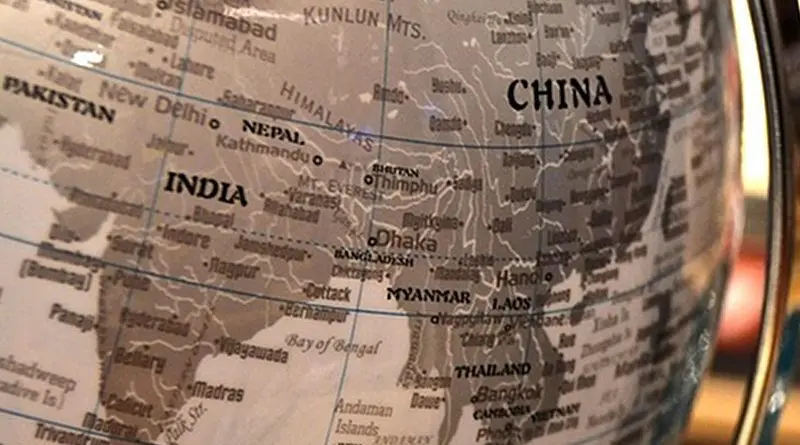India’s Experiment With Sub-Regional Initiatives – Analysis
As SAARC frequently ceased to be a regional platform to foster regional trade and connectivity being a victim to Indo-Pak standoff, India led efforts at launching sub-regional initiatives such as Bay of Bengal Initiative for Multi-Sectoral Technical and Economic Cooperation (BIMSTEC) in 1997 comprising members such as Bangladesh, Bhutan, India, Myanmar, Nepal, Sri Lanka and Thailand, BCIM initiative in 1999 to establish an economic corridor between Bangladesh, China, India and Myanmar and BBIN initiative in 1997 between Bangladesh, Bhutan, India and Nepal with the objectives of forging cooperation on connectivity of power, transport and infrastructure.
However, since their inception, these sub-regional initiatives witnessed lack of leadership, resources, and institutionalization. For instance, BCIM remained a Track II initiative for India till 2013, and it took 17 years for BIMSTEC to establish a permanent secretariat in Dhaka in 2014. BBIN initiative which was activated following India’s failure to push through the Motor Vehicles Agreement (MVA) in the SAARC Summit held in Kathmandu proved to be a fledgling initiative with Bhutan’s subsequent withdrawal from the agreement.
The failure of all these initiatives after so many years of their coming into existence point to the fact that it is not merely the Indo-Pak conflict alone which acted against the drive for regional integration. It has become quite palpable that the scope for India-led sub-regional cooperation appeared further squeezed with the rise of Chinese sway within these countries through Belt and Road Initiatives (BRI).
As BIMSTEC is a South Asia-Southeast Asia sub-regional grouping which comprises five countries from South Asia – Bangladesh, Bhutan, India, Nepal, Sri Lanka, the success of the grouping would depend on how Indian manages its relations with the South Asian countries.
It is evident how India followed the standard practice of engaging with specific political groups in the neighborhood which it believed would work in favor of its interests. For instance, India viewed Awami League Party of Bangladesh as favorable to its interests, saw its interests fulfilled with the rise of democratic forces in Nepal and perceived Maithripala Sirisena the incumbent President of Sri Lanka as pro-India.
India’s reluctance to engage with divergent political groups in the neighborhood not only brought more rigidity to bilateral relations, but it also acted as a major roadblock in the way towards regional integration. Resetting relations with Nepal emerged as a challenge for India with Maoist parties forming a government there.
Notwithstanding its pro-India gestures, Sirisena government of Sri Lanka did not hesitate to lease out land to China for 99 years for the development of Hambantota port.
Similarly, Abdulla Yameen, former President of the Maldives did not show any change in behavior according to India’s wish despite the cancellation of India’s Prime Minister Modi’s visit to the country on the ground of deteriorating political conditions there.
Thus, India must strive to work with all the working political establishments in the neighboring countries irrespective of their preferences and ideological leanings.
Different political and religious leaders of India were witnessed not caring to mince their language which might hurt sentiments of people in the neighborhood. There was an apparent lack of understanding in New Delhi that religious and cultural rhetoric could easily be capitalized by dissident groups in neighboring countries to raise an anti-Indian image.
For example, Aparna Pande in an article for Outlook magazine referred to such callous and irresponsible remarks from the Indian political establishment in June 2011 which included terminologies such as – at least a quarter of Bangladesh’s population “swear by the Jamiat-e-Islami” and “are very anti-Indian” (A. Pande, India-Bangladesh: Sins of Omission & Commission, Huffington post, July 6, 2011, https://www.hudson.org/research/8165-india-bangladesh-sins-of-omission-commission ).
The views which were said in an off-the-record meeting got inadvertently posted in the Prime Ministers’ Office (PMO) website lasting for 30 hours before they were deleted and the External Affairs Minister of India had to plan to visit Bangladesh to lower tensions quickly.
Similarly, there were irresponsible remarks on illegal immigrants from neighboring countries which has caused to raise eyebrows in the neighborhood. Use of cultural rhetoric like Hindutva and Akhanda Bharat among others could play straight into the hands of opposing forces in the neighborhood.
It is pertinent to understand that smaller South Asian states are continuously making efforts at defining their identity as different from an Indian identity because they were once part of Indian civilization. There is every possibility that attempts to create a different identity might turn into desires for anti-Indian identity if India fails to share trust with its neighbors. The only way for India to bring its neighbors into confidence is to engage them in more consultations, discussions, and debates and allow them to give their inputs and feedback on bilateral and regional issues.
India must have to focus on the timely accomplishment of the bilateral projects running in neighboring to enhance its reliability and acceptability in the face of Chinese sway in the region. India’s ‘Act East’ policy thrust should not lead to a myopic approach with overemphasis on the littoral countries of the Southeast Asian region at the expense of the littoral countries of the South Asian region as well as members of BIMSTEC such as Sri Lanka (which may not be significant to India’s eastward thrust) and not yet a member of the organization – Maldives where China has enhanced its footprint to the exclusion of New Delhi’s influence. The countries are not only engaged in ports and interconnectivity projects with China under BRI, these are recipient to arms and military assistance from China too.

